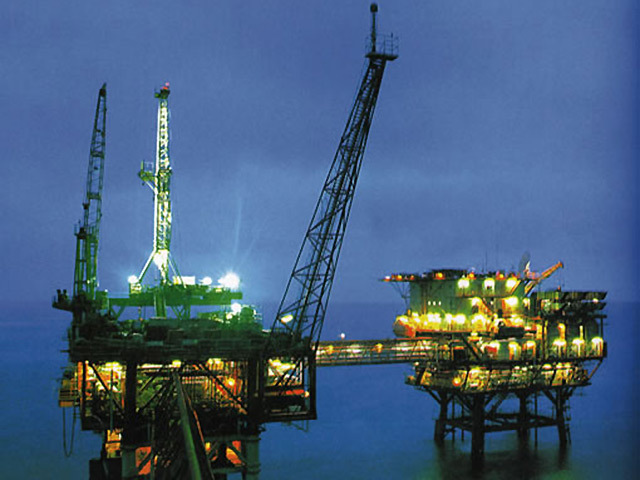
Cnooc Ltd. plans to raise capital spending for the first time since crude began its crash in 2014 as China’s biggest offshore oil and gas producer prepares for life after the slump and a second year of falling output.
The Beijing-based explorer will increase expenditure, including in the Gulf of Mexico, to 60 billion to 70 billion yuan ($8.7 billion to $10.2 billion) for 2017 after cuts in the last two years, according to a statement to the Hong Kong stock exchange and a press conference on Thursday.
It set its production target to between 450 million to 460 million barrels of oil equivalent after last year posting the first output decline since at least 1999.
“As a pure upstream player, Cnooc has to invest for the future, especially in exploration as it needs to find new reserves to keep sustainable development,” said Tian Miao, a Beijing-based analyst at North Square Blue Oak Ltd. “Higher capital spending for 2017 is in line with improved sentiment on crude prices since late last year.”
Shares in Hong Kong fell 1.5 percent to HK$9.85 as of 9:41 a.m. local time, compared with a 0.6 percent drop for the city’s benchmark Hang Seng Index.
The oil industry is expected to boost spending for the first time in three years after slashing almost half a million jobs globally during crude price’s downturn, according to industry consultant Graves & Co. Brent averaged about $45 a barrel in 2016, more than 50 percent below levels in 2014, and is expected to rise above $55 this year, according to the median of 45 analyst estimates compiled by Bloomberg. Cnooc is more exposed to the price of the commodity compared with its Chinese peers as it earns almost all its income from exploration and production.
Cnooc said in a separate online presentation that it spent 50.3 billion yuan last year. The company produced an estimated 476 million barrels of oil equivalent during that time, meeting the lower end of its 470 million to 485 million barrel target, it said Thursday.
The deep-water Gulf of Mexico fields, Appomattox and Stampede, will take a majority of overseas spending this year, Chairman Yang Hua said at a press conference in Hong Kong. The two fields, along with Egina in Nigeria, “meet our principles of investing capital in high-return projects around the world,” Yang said.
Preferred Play
The explorer posted its first-ever half-year loss in August as crude oil’s plunge and writedowns on assets including Canadian oil sands crimped earnings. The explorer reported a 15 percent fall in third-quarter sales as output declined with capital spending. Domestic production fell more than 9 percent because of declines from existing fields and weak natural gas demand, the company said in October.
Still, the explorer is a preferred stock among analysts. Of the 23 analysts tracking the company, 13 rate it a buy, seven as hold and three as sell. Analysts at Nomura Holdings Inc., Morgan Stanley, and Sanford C. Bernstein & Co. had forecast before Thursday’s release that the company will raise spending this year by between 10 percent to as much as 30 percent.
China’s crude oil output has fallen 6.9 percent in the first 11 months of 2016 to about 4 million barrels a day as its state-owned producers struggled to support output at the country’s aging fields. Imports last year grew at the fastest pace in six years — and the nation was the world’s biggest buyer in December — as the cheapest crude in more than a decade triggered stockpiling and as independent refiners accelerated purchases.